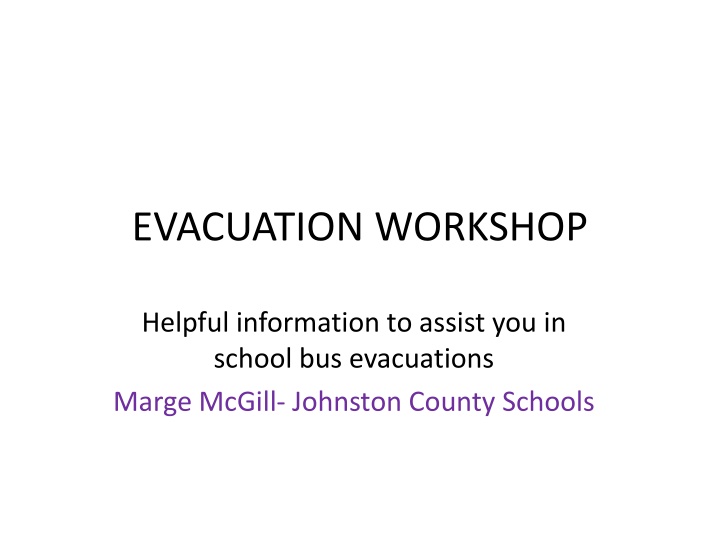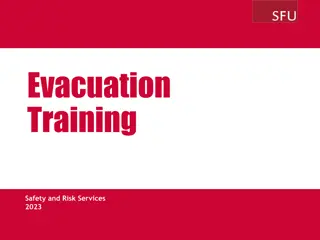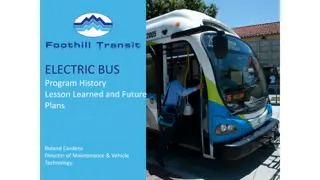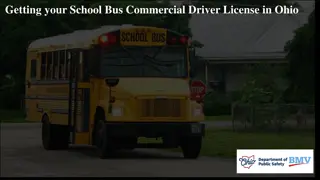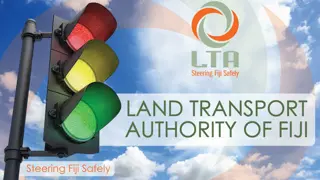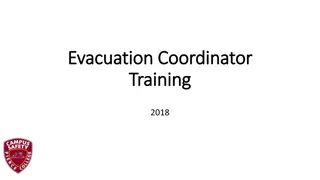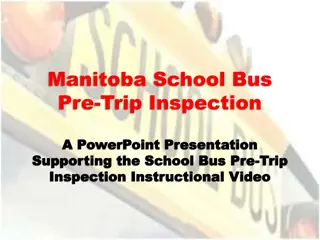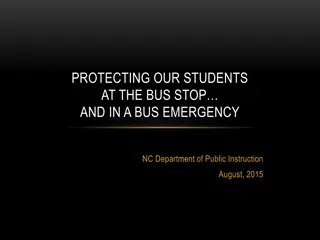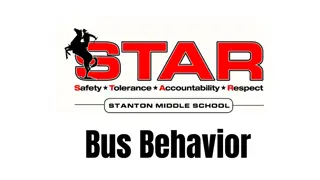School Bus Evacuation Workshop Information
This helpful information provides guidance on school bus evacuations, emphasizing the importance of remaining calm, knowing when to evacuate, assessing safety before committing to evacuation, and preparing student helpers beforehand. It covers topics such as emergency exits, situations requiring evacuation, and considerations for a safe evacuation process.
Download Presentation

Please find below an Image/Link to download the presentation.
The content on the website is provided AS IS for your information and personal use only. It may not be sold, licensed, or shared on other websites without obtaining consent from the author.If you encounter any issues during the download, it is possible that the publisher has removed the file from their server.
You are allowed to download the files provided on this website for personal or commercial use, subject to the condition that they are used lawfully. All files are the property of their respective owners.
The content on the website is provided AS IS for your information and personal use only. It may not be sold, licensed, or shared on other websites without obtaining consent from the author.
E N D
Presentation Transcript
EVACUATION WORKSHOP Helpful information to assist you in school bus evacuations Marge McGill- Johnston County Schools
Emergency Exits Front Entry Door Emergency Side Windows Rear Emergency Door Side Emergency Door ( if equipped) Two Roof Escape Hatches Lift ( if equipped)
REMEMBER There are times where you and the students are safer INSIDE the bus than outside. It is part of your job duty and responsibility that all students know how and when to evacuate and are familiar with all exits and when to use them. REMAIN CALM, accidents can be scary, violent, and sudden.
WHEN SHOULD YOU EVACUATE? Smoke or fire Bus is in deep water Bus is disabled and may be struck by a vehicle same size or larger Bus is stuck or disabled on a railroad crossing Weapon on Bus and threat to students Tornado Warning
Before you commit to Evacuation Is there a safe location for passengers/students to wait? Are there any power lines down around the bus? Is there diesel or gasoline flowing or spilled? Can Bus be moved safely to a better location? What exits are accessible to use to safely move students away from bus.
HELPERS Have your student helpers designated, trained and prepared BEFORE your emergency. Look for safe areas while you drive your route that you could possibly use. Examples of locations would be nearby schools, fire stations, rescue buildings and church lots. These locations usually offer sufficient temporary parking and possibly a place where you could offload your passengers where they would be safe ( possible tornado scenario) Know your students and their level of assistance to you. Know your EC Students and their ability to understand and follow your directions. Make it a point to know whether they have a trigger, (out of the ordinary noises, touch, a sibling they may be concerned about) Reassure students and reinforce bus safety and evacuation procedures.
